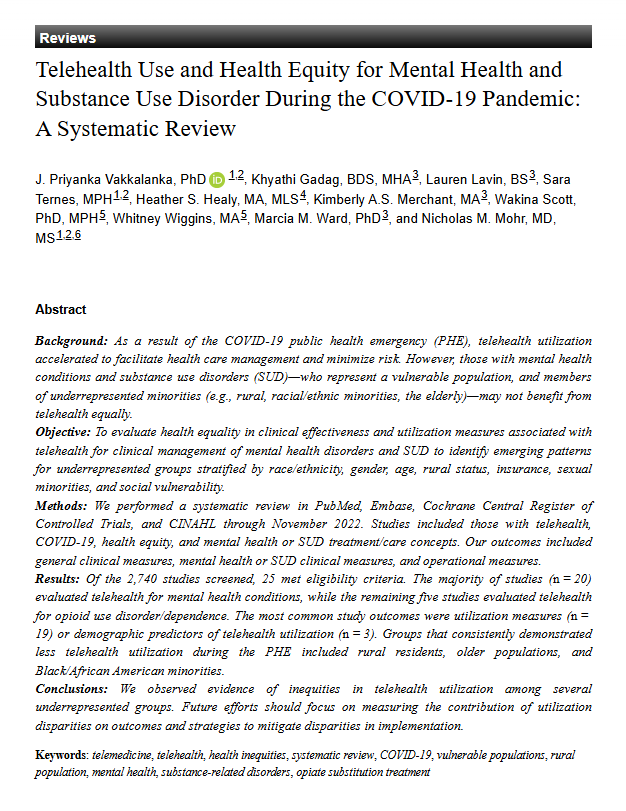Headline
Rural, older adult, and black populations are less likely to use telehealth for behavioral health services.
Background
Since the COVID-19 pandemic in 2020, the use of telehealth has expanded rapidly. This approach can support increased access to care, including services to treat and manage behavioral health conditions. However, the health equity implications of telehealth use is unclear, particularly as it related to populations who may face barriers to using these services or who prefer in-person care. This systemic review assessed the impact of tele-behavioral health on health care utilization and clinical outcomes for underrepresented groups. Specifically, the study reviewed evidence on tele-behavioral health’s impact based on race/ethnicity, gender, age, rural status, insurance, sexual minorities, and social vulnerability.
Findings
This systemic review examined tele-behavioral health studies from 2020-2022 that include findings for at least one of the aforementioned populations. Most of the 25 studies focused on utilization and one focused on clinical effectiveness.
Of the 10 studies with geographic analysis, most found rural residents used tele-behavioral health less than urban residents. Most of the 16 studies stratified by age found lower use among older populations. In seven of 21 studies stratified by race/ethnicity, Black populations were less likely than white populations to use tele-behavioral health. Of the 20 studies stratified by gender, about half showed no difference, while the other half showed women were more likely to use the service.
Policy/Program Takeaways
Some populations may face barriers to tele-behavioral health access, though more research is needed to understand telehealth’s impact on heath equity, particularly clinical outcomes for different populations. Health care organizations and policymakers may explore how to overcome barriers to telehealth access to support equitable care.

